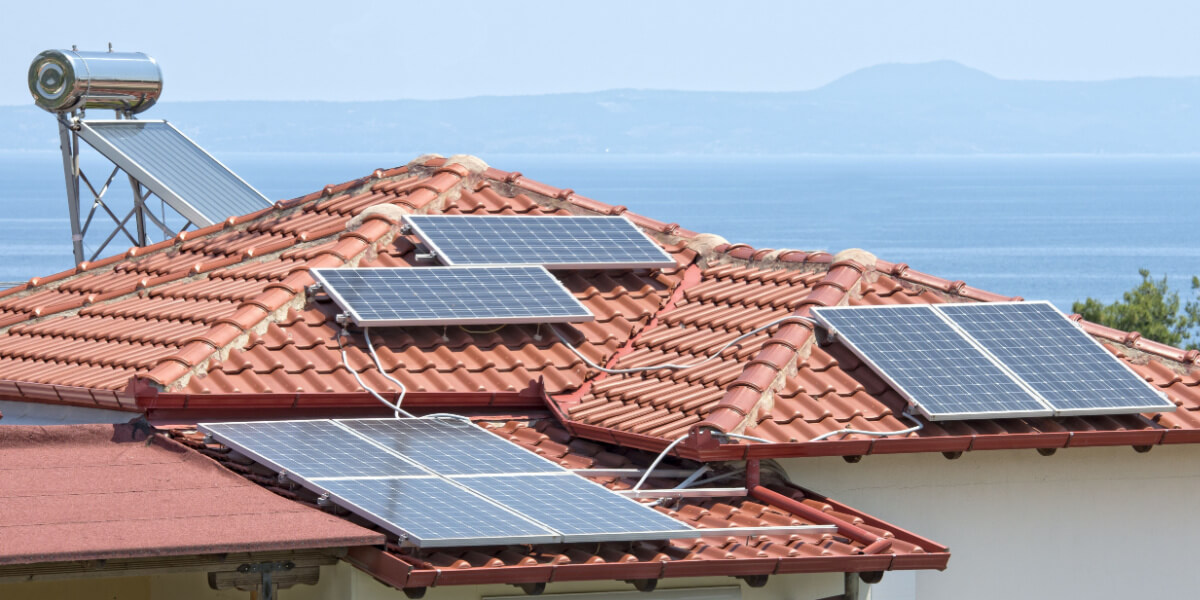KEY POINTS
- Solar diverters redirect excess electricity from your solar panels to your hot water system instead of the grid, which typically saves you money on heating water by relying less on grid energy.
- However, there aren’t many solar diverter models available, each with a limited capacity. Moreover, they require a professional installation which incurs a fee.
- Depending on their brand, make and model, solar diverters typically cost between $800 and $1,500.
Solar diverters are one of the most efficient ways to save energy and money. They can help you harness the energy of the sun to cut back on the electricity costs of your home or business. The real magic of solar diverters is that they can power your appliances and even heat your hot water.
Let’s take a closer look at solar diverters, what they are, how they work, pros and cons, cost factors and more. Keep reading to see if a solar diverter is right for you or skip ahead by clicking on the links below.
On this page:
Advertisement
What’s a solar diverter?
Solar diverters, also known as solar power diverters, are a useful tool for taking advantage of solar energy by using your excess power to heat water instead of back feeding into the grid. They act as a switch between solar panels and hot water systems, helping capture solar power and store it for later use.
Solar diverters are becoming increasingly popular for a variety of reasons, particularly because they can be an effective way to lower electricity bills. Solar diverters are also known for being easy to install and maintain, having minimal upkeep and repair costs and providing clean renewable energy that can help reduce a household’s carbon footprint.
Compare solar plans
Here are some of the cheapest solar-specific deals from the retailers on our database. These costs are based on the Ausgrid network in Sydney but prices will vary depending on your circumstances. We show one product per retailer, listed in order of lowest price first. Annual price estimates assume general energy usage of 3900kWh/year for a residential customer on a single rate tariff. Price estimates exclude solar feed-in tariff credits. These are products from referral partners†. Our database may not cover all deals in your area, and please check retailer websites for up to date information.
Here are some of the cheapest solar-specific deals from the retailers on our database. These costs are based on the Citipower network in Melbourne but prices will vary depending on your circumstances. We show one product per retailer, listed in order of lowest price first. Annual price estimates assume general energy usage of 4000kWh/year for a residential customer on a single rate tariff. Price estimates exclude solar feed-in tariff credits. These are products from referral partners†. Our database may not cover all deals in your area, and please check retailer websites for up to date information.
Here are some of the cheapest solar-specific deals from the retailers on our database. These costs are based on the Energex network in Brisbane but prices will vary depending on your circumstances. We show one product per retailer, listed in order of lowest price first. Annual price estimates assume general energy usage of 4600kWh/year for a residential customer on a single rate tariff. Price estimates exclude solar feed-in tariff credits. These are products from referral partners†. Our database may not cover all deals in your area, and please check retailer websites for up to date information.
Here are some of the cheapest solar-specific deals from the retailers on our database. These costs are based on SA Power network in Adelaide but prices will vary depending on your circumstances. We show one product per retailer, listed in order of lowest price first. Annual price estimates assume general energy usage of 4000kWh/year for a residential customer on a single rate tariff. Price estimates exclude solar feed-in tariff credits. These are products from referral partners†. Our database may not cover all deals in your area, and please check retailer websites for up to date information.
Can solar diverters heat hot water?
Yes, one of the main reasons homeowners install a solar diverter is to use excess solar energy to power their hot water systems, rather than feeding it back into the grid for a rebate. So if you’re not happy with your solar feed-in tariff, a solar diverter can be a cost-effective way to save on utility bills.
Not only are these intuitive little devices an efficient way to heat hot water, but they are generally fairly affordable, making them ideal for any home looking to cut costs while still living comfortably.
How does a solar diverter work?
When sunlight hits your photovoltaic (PV) panels, the electricity generated can either be used in your home or sent back to the grid, usually for a small rebate on your bill. With a solar diverter, any excess electricity will instead be diverted from the grid and into an immersion heater in your hot water cylinder to provide hot water to your home.
When there isn’t enough sunlight for your PV panels to generate electricity for both powering appliances in your house and heating up hot water, no problem! The solar diverter will detect this lack of energy production and switch off automatically so that it doesn’t draw power from elsewhere.
Pros and cons of solar power diverters
The main advantage of using a solar hot water diverter is that it can help you reduce energy costs by taking advantage of excess power that would otherwise be sent back to the grid. These devices are relatively easy to install, don’t require much maintenance and can provide reliable hot water heating without needing additional grid electricity.
On the flipside, a solar diverter can be another expense to your solar system and certain diverter models may not be available through all installers. They can also add another layer of complexity to your solar system setup. To recap, check out the main advantages and disadvantages of solar PV diverters below.
| Pros | Cons |
|
|
|
|
|
|
Solar diverter prices
Solar diverter prices range from $800 to $1,500, depending on the model and installation fees. These devices typically come with a payback period of roughly three to four years, so they should be considered a long-term investment.
That said, the actual payback period for a solar diverter will vary between models, how much unwanted energy they’re diverting to heat hot water and the upfront costs charged by your local solar installer. That’s why it’s best to contact a few companies for quotes before settling on the first price you see.
You might also be interested in:
Are solar diverters a good investment?
If you’re looking for an efficient way of utilising solar power for both hot water and household appliances, investing in a solar PV diverter might be right for you. While they do come with some downsides – such as added complexity and potentially higher upfront costs – the long-term savings can make them worth considering.
If you think this type of renewable energy could be beneficial for your home or business, it may be sensible to talk to an experienced solar installer about your options.
Image credit: Madridav/Shutterstock.com, Roy Pedersen/Shutterstock.com




Share this article